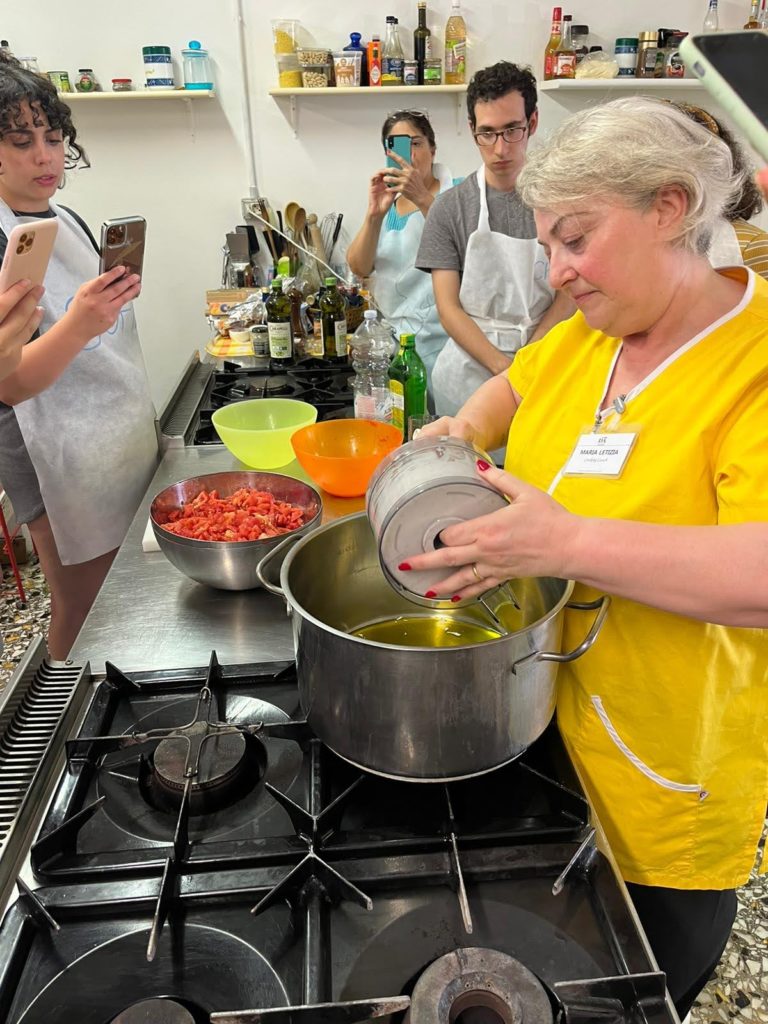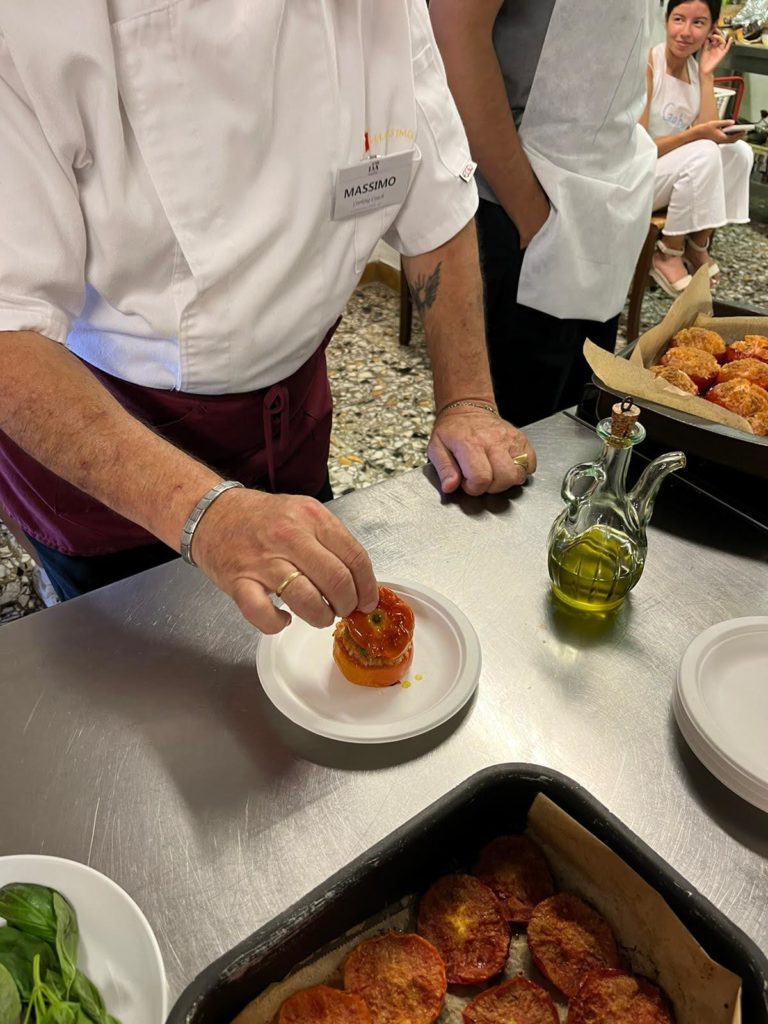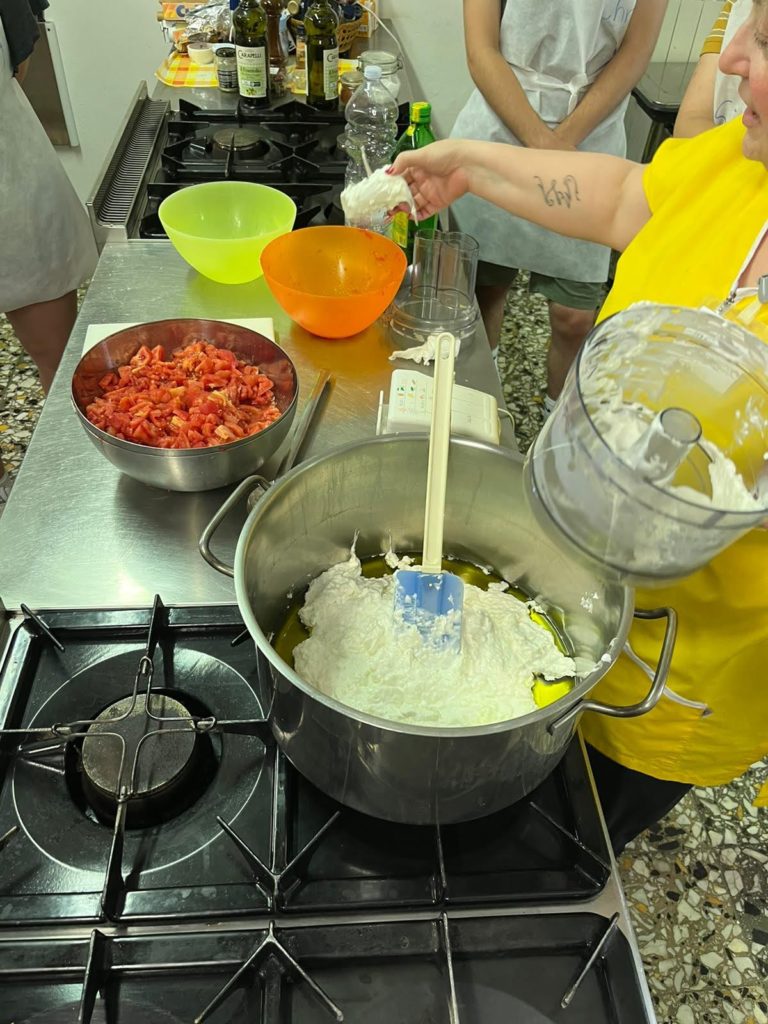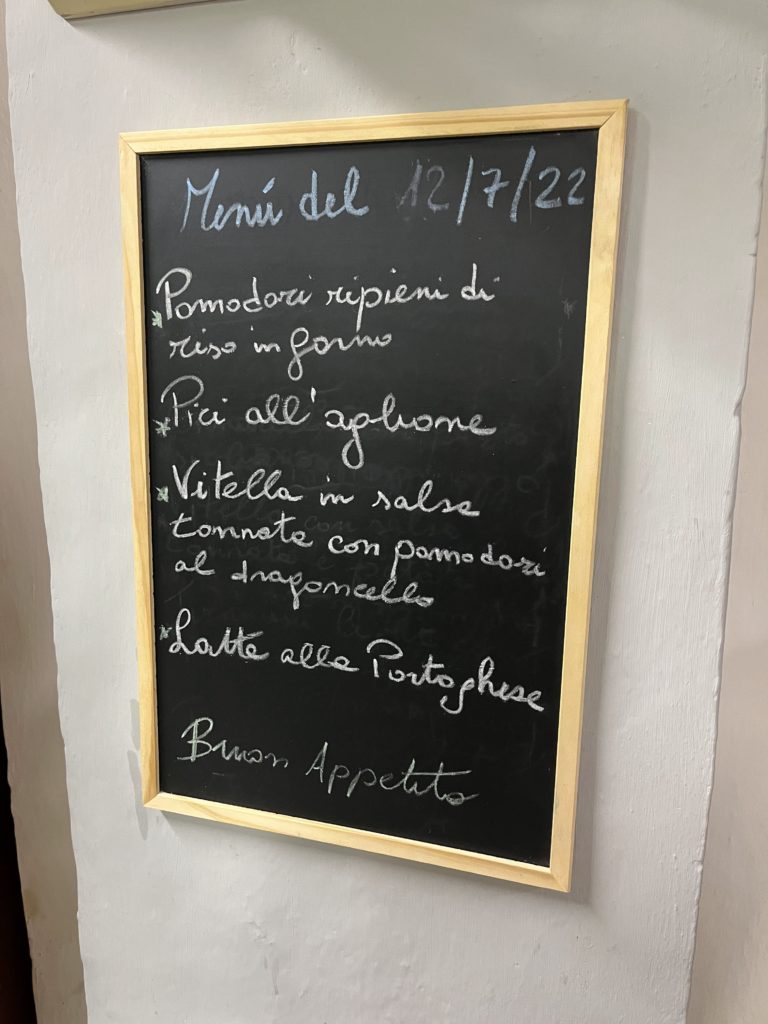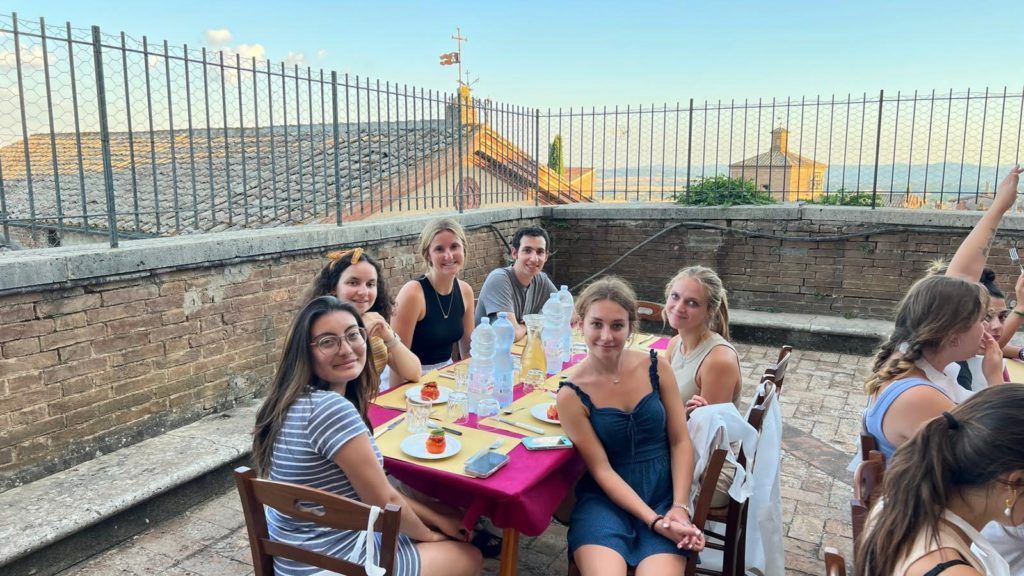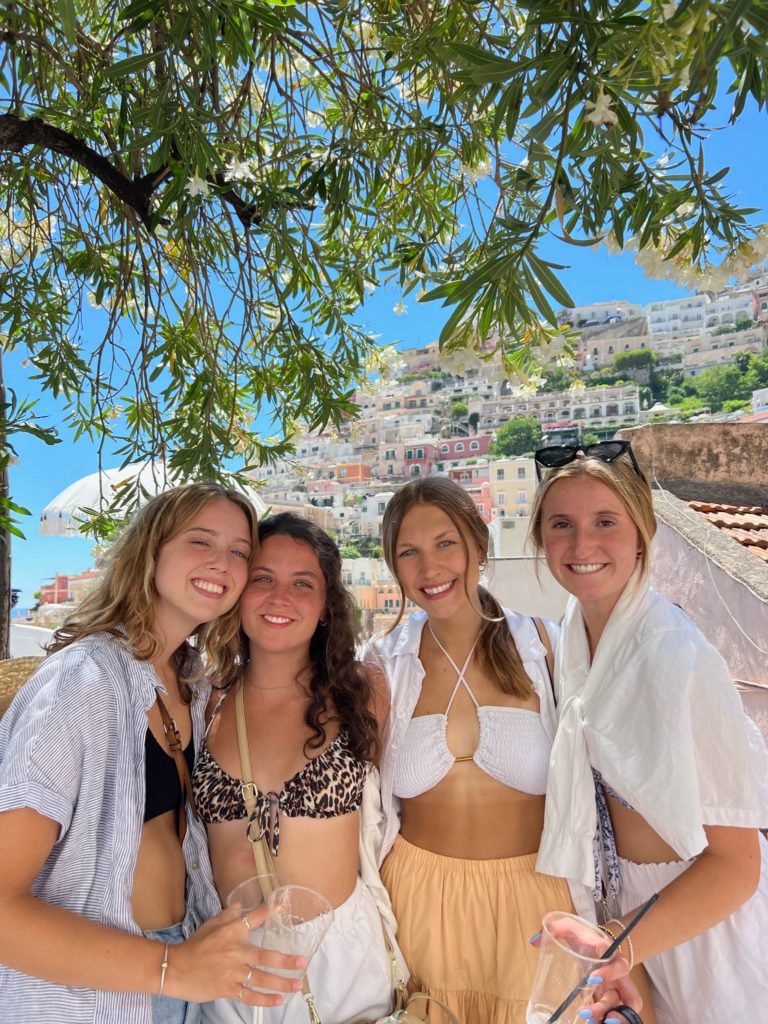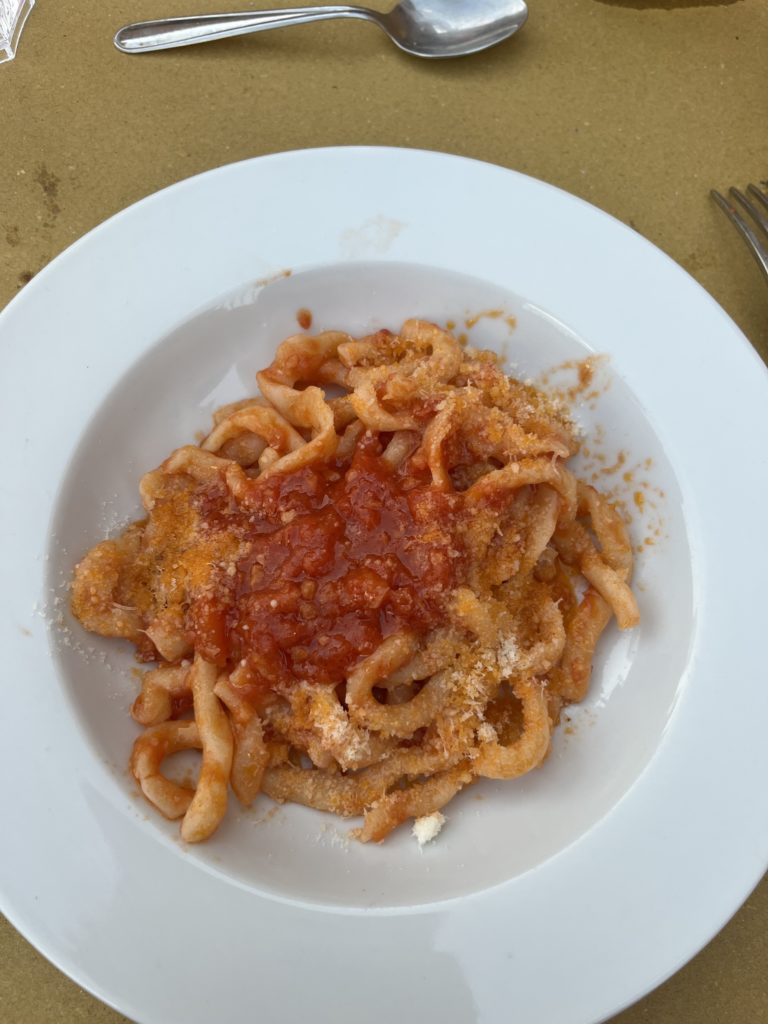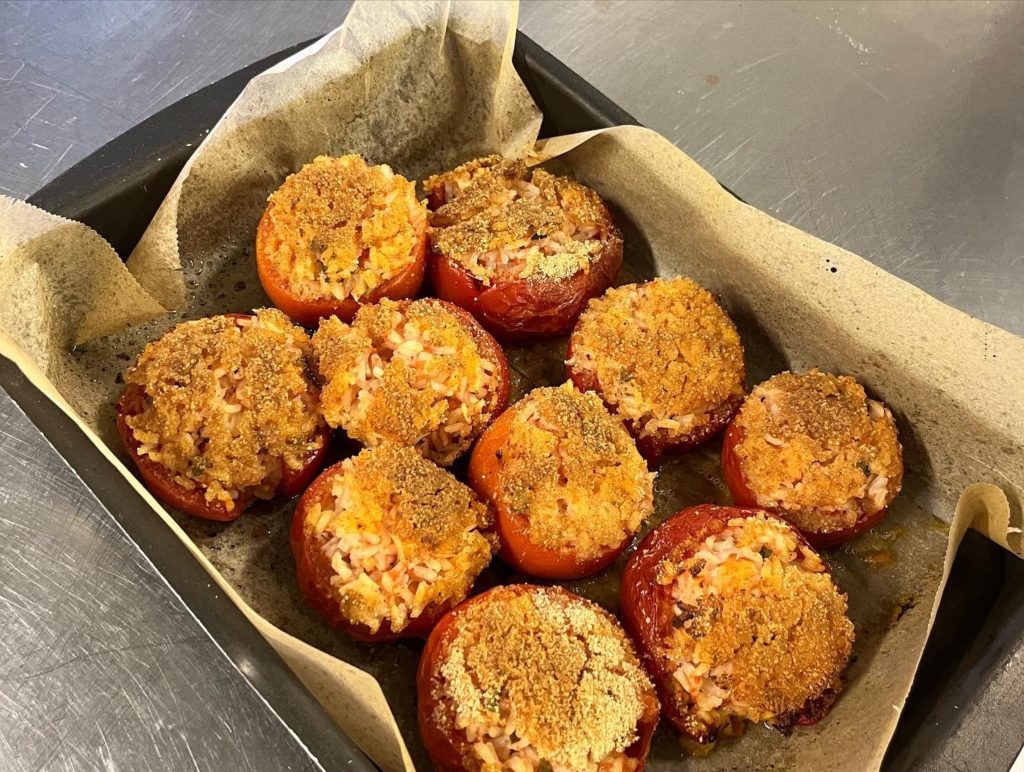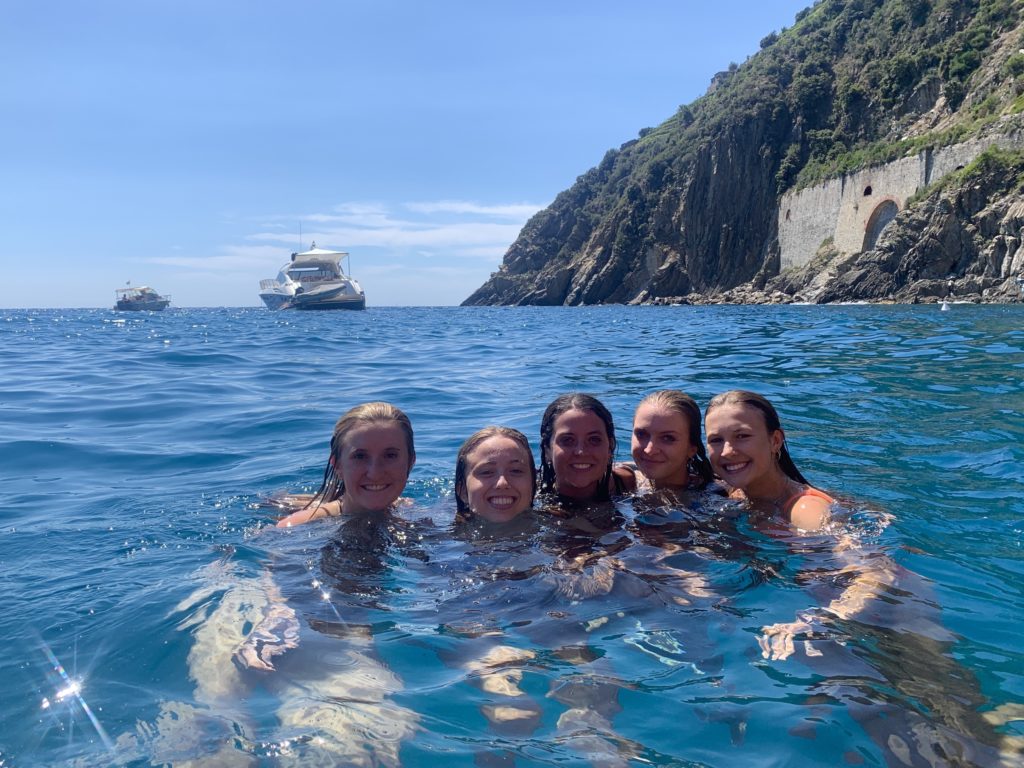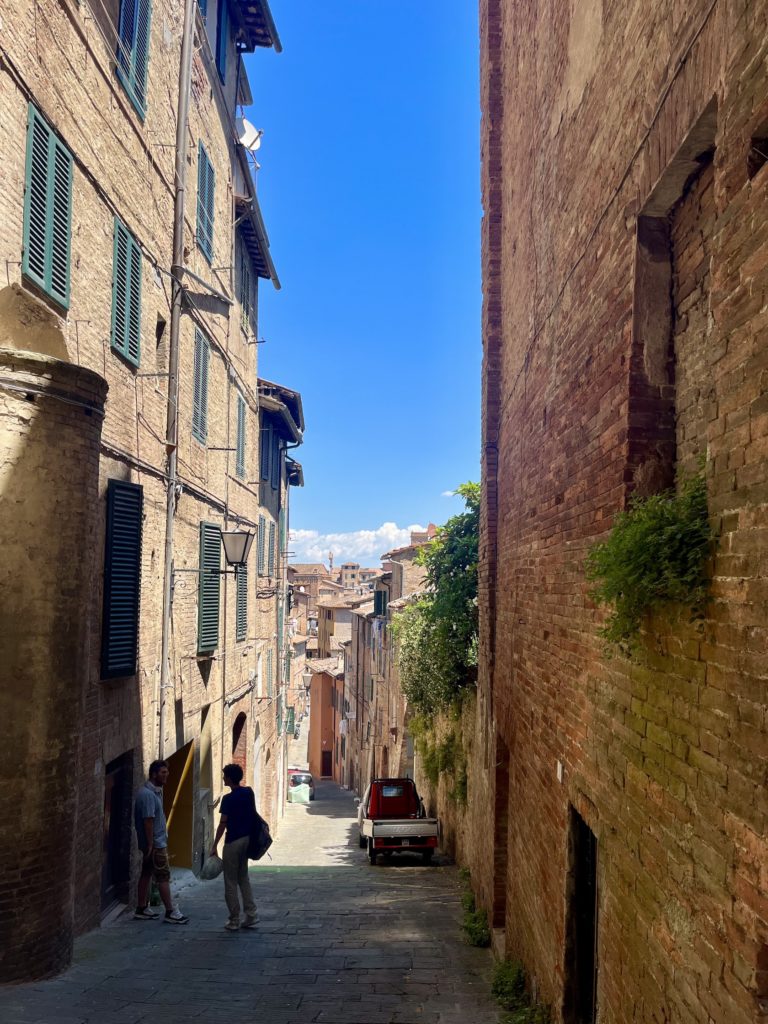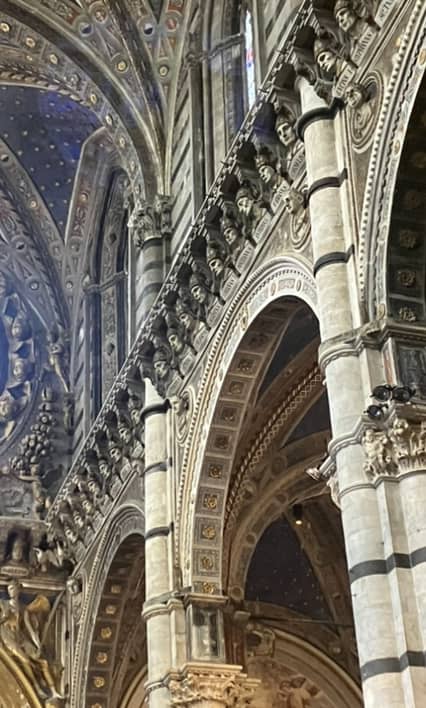On my last week in Siena, I took a cooking class at the Dante Alighieri School alongside other Notre Dame students and a group of students from the University of Illinois in Chicago. The class was led by three cooking coaches: Letizia, Massimo, and Aldo. I spent a majority of the class under Letizia’s guidance and a few of the things I learned about her were that Letizia’s primary job is at a bank, but she loves to cook. She and her husband, who happens to be Massimo, work part time at the school as cooking instructors, and they love it. In general, every recipe they share with their students they have memorized by heart, and their joy for sharing them is obvious. Like everyone else at the school, Letizia, Massimo, and Aldo were some of the kindest people I have ever met, and naturally, they were amazing teachers.
There were four courses on the menu for that evening, therefore four plates we would learn to make. In order of, the four courses we learned to make were pomodori ripieni di riso in forno, pici all’aglione, vitella in salsa tonnata, and latte alla portoghese. The class was split into three groups, one group per instructor. I chose to stay with Letizia; she was in charge of the sauce for the pici. Letizia explained, in depth, the process of this simple yet lovely sauce, and it was incredible to watch as her experienced hands swiftly handled each ingredient. She was adamant that everyone in her group had the opportunity to contribute to the sauce making; she gave me the chance to dice vegetables, blend them, and stir them into the pot. The tasks to get the end product may at first seem simple enough, but it was obvious that each step takes great care and technique.
As I stirred in the tomatoes to the big pot, Letizia walked over to me and asked, “Come va la salsa, tesoro?” (How’s the sauce coming along, treasue?) She then looked into the pot, complimented my contribution to the sauce making, and gathered the rest of the group to offer up further tips. Letizia loved watching us try our hand at the cooking and delightedly complimented us often. Needless to say, the process was just as fun as it was informative. The sauce took a couple of hours to make and consisted primarily of oil, tomatoes, lots of garlic, and some spices. As we let it sit in the pot for some time, Letizia led us over to the back of the kitchen, and there she showed us the process of making pici: a traditional Senese pasta. The pasta, she explained, was traditionally made with only water and flour in its origins due to availability of resources back in the day. However, today it isn’t unusual to make a batch of pici with the inclusion of a single egg, as is her method. What makes pici so special is that due to the quick hand-rolling method of each individual noodle, it has a bit of an irregular shape and texture. Each batch is unique.
By this point, Massimo and Aldo had finished teaching the other groups the process of making the veal and stuffed tomatoes, so everyone had gathered to watch Letizia knead the dough. She expertly and swiftly handled the batch, and as she finished incorporating the ingredients, dusted her hands and pointed to the batch of pici noodles she’d made earlier in the day. It had taken her two hours to make! Letizia stepped back and told us to try kneading; it wasn’t as easy as she made it look. Afterward, she explained the method of hand rolling the pasta – which also wasn’t as easy as it looked – and watched on as we together the class worked through the batch of dough. Thankfully, there were enough students to get through the task within the half hour. Our pasta was definitely irregularly shaped, and the cooking coaches looked pretty proud with our work. Once the pasta was finished, we quickly learned to make the dessert, and then it was time to serve and eat.
The class overall lasted about three hours, and we stayed to eat together out on the patio for a couple more. The dishes were amazing, and preparing them was even better. I think out of all the activities I participated in during my time at the DA school, this one was definitely one of my favorites, and no words can describe the gratitude I feel towards the school for providing these incredible experiences.
